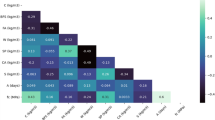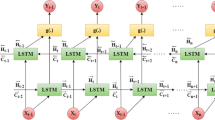Abstract
Diverse loads frequently damage concrete when it is in use. However, it might be challenging to immediately identify the stress and damage of concrete in actual engineering situations. In order to predict the stress and damage of concrete, a deep learning (DL) model based on the convolutional neural network (CNN) is proposed in this paper. To provide the training and validation data, a finite element (FE) model of uniaxial compression of concrete specimens based on the concrete damage-plasticity (CDP) model is constructed. The DL model is trained with the strain contours with a specified range provided by the FE model as the inputs and the stress and damage assessment of concrete as the outputs. The prediction of the stress and damage of concrete materials was effectively realized by the trained DL model, and it was verified in a larger range of working conditions distinct from the training and verification sets. The results show that the DL algorithm has good accuracy and reliability. By efficiently and correctly recreating the FE prediction results, the DL model offers a method for promptly evaluating the stress and damage of concrete structures under complicated stress circumstances in actual engineering.










Similar content being viewed by others
References
Zhu, H.P., Xu, W.S., Chen, X.Q., Xia, Y.: Quantitative concrete-damage evaluation by acoustic emission information and rate-process theory. Eng. Mech. 011, 86–91 (2008). (in Chinese)
Wang, Y.S., Luo, Q.T., Xie, H., Li, Q., Sun, G.Y.: Digital image correlation (DIC) based damage detection for CFRP laminates by using machine learning based image semantic segmentation. Int. J. Mech. Sci. 230(5), 107529 (2022)
Zou, Q., Zhang, Z., Li, Q.Q., Qi, X.B., Wang, Q.: Deepcrack: learning hierarchical convolutional features for crack detection. IEEE Trans. Image Process. 28(3), 1498–1512 (2018)
Yann, L.C., Léon, B., Yoshua, B., Patrick, H.: Gradient-based learning applied to document recognition. Proc. IEEE 86(11), 2278–2324 (1998)
Cha, Y.J., Choi, W., Büyüköztürk, O.: Deep learning-based crack damage detection using convolutional neural networks. Comput. Aided Civ. Infrastruct. Eng. 32(5), 361–378 (2017)
Deng, F.M., He, Y.G., Zhou, S.X., Yu, Y., Cheng, H.G., Wu, X.: Compressive strength prediction of recycled concrete based on deep learning. Constr. Build. Mater. 175, 562–569 (2018). (in Chinese)
Han, G., Kim, Y.M., Kim, H., Oh, T.M., Song, K.I., Kim, A., Kim, Y., Cho, Y., Kwon, T.H.: Auto-detection of acoustic emission signals from cracking of concrete structures using convolutional neural networks: upscaling from specimen. Expert Syst. Appl. 186, 115863 (2021)
Minh, H.L., Khatir, S., Wahab, M.A., Cuong-Le, T.: A concrete damaged plasticity model for predicting the effects of compressive high-strength concrete under static and dynamic loading. J. Build. Eng. 44(2), 103239 (2021)
Ayhan, B., Lale, E.: Modeling strain rate effect on tensile strength of concrete using damage plasticity model. Int. J. Impact Eng 162(4), 104132 (2021)
Lubliner, J., Oliver, J., Oller, S., Onate, E.: A plastic-damage model for concrete. Int. J. Solids Struct. 25(3), 299–326 (1989)
Lee, J.H., Fenves, G.L.: Plastic damage model for cyclic loading of concrete structures. J. Eng. Mech. 124(8), 892–900 (1998)
Shi, X.Y., Yao, Y., Wang, L., Zhang, C.: The influence of CDP model paeameters based on the numerical simulation of uniaxial loading test. Building Structure. 51(S02), 999–1007 (2021). (in Chinese)
Long, X., Lee, C.K.: Modelling of two dimensional reinforced concrete beam-column joints subjected to monotonic loading. Adv. Struct. Eng. 18(9), 1461–1474 (2015)
Krajcinovic, D., Fonseka, G.U.: The continuous damage theory of brittle materials, part 1: general theory. J. Appl. Mech. 48(4), 809–815 (1981)
Qin, H., Zhao, X.Z.: Study on the ABAQUS damage parameter in the concrete damage plasticity model. Struct. Eng. 29(06), 27–32 (2013)
Wang, Z.Q., Yu, Z.W.: Concrete damage model based on energy loss. J. Build. Mater. 7(4), 365–369 (2004). (in Chinese)
Sidorroff, F.: Description of anisotropic damage application to elasticity, pp. 237–244. Springer, Berlin, Heidelberg (1981)
Birtel, V.A.M.P., Mark, P.: Parameterised finite element modelling of RC beam shear failure. 122919102 (2006)
Hl, A., Sk, B., Mawc, D., Cl, A.: A concrete damaged plasticity model for predicting the effects of compressive high-strength concrete under static and dynamic loading. J. Build. Engineering. 44(2), 103239 (2021)
Li, X.X.: Parametric study on numerical simulation of missile punching test using concrete damaged plasticity (CDP) model. Int. J. Impact Eng 144, 103652 (2020)
Wosatko, A., Winnicki, A., Polak, M.: Role of dilatancy angle in plasticity-based models of concrete. Arch. Civ. Mech. Eng. 191, 268–283 (2019)
Rewers, I.: Numerical analysis of RC beam with high strength steel reinforcement using CDP model. IOP Confer. Ser. Mater. Sci. Eng. 471, 22–25 (2019)
Earij, A., Alfano, G., Cashell, G., Zhou, X.: Nonlinear three–dimensional finite–element modelling of reinforced–concrete beams: computational challenges and experimental validation. Eng. Fail. Anal. 82, 92–115 (2017)
Guo, Y.B., Gao, G.F., Jing, L., Shim, V.: Response of high-strength concrete to dynamic compressive loading. Int. J. Impact Eng 108(1), 114–135 (2017)
Lim, J.C., Ozbakkaloglu, T., Gholampour, A., Bennett, T., Sadeghi, R.: Finite-element modeling of actively confined normal-strength and highstrength concrete under uniaxial, biaxial, and triaxial compression. ASCE J. Struct. Eng. 142(11), 04016113 (2016)
Michał, S., Andrzej, W.: Calibration of the CDP model parameters in Abaqus, In: The 2015 World Congress on Advances in Structural Engineering and Mechanics, pp. 25–29 (2015)
Sümer, Y., Aktaş, M.: Defining parameters for concrete damage plasticity model. Chall. J. Struct. Mech. 1, 149–155 (2015)
Al-Zuhairi, A.H., Al-Ahmed, A.H., Abdulhameed, A.A., Hanoon, A.N.: Calibration of a new concrete damage plasticity theoretical model based on experimental parameters. Civ. Eng. J. 8, 225–237 (2022)
Daa, B., Fang, M.A., Yh, A., Jw, A.: Automated identification of compressive stress and damage in concrete specimen using convolutional neural network learned electromechanical admittance. Eng. Struct. 259(1), 114176 (2022)
Acknowledgements
This work was supported by the National Natural Science Foundation of China (No. 52175148), Shock and Vibration of Engineering Materials and Structures Key Laboratory of Sichuan Province (No. 22kfgk04), the National Key Laboratory Foundation 2022-JCJQ-LB-006 (No. 6142411232212), and the Regional Collaboration Project of Shanxi Province (No. 2022104041101122). The authors thank Mr. Xiangshen Song and Mr. Minghui Mao for their invaluable insights and significant contributions.
Author information
Authors and Affiliations
Corresponding authors
Additional information
Publisher's Note
Springer Nature remains neutral with regard to jurisdictional claims in published maps and institutional affiliations.
Rights and permissions
Springer Nature or its licensor (e.g. a society or other partner) holds exclusive rights to this article under a publishing agreement with the author(s) or other rightsholder(s); author self-archiving of the accepted manuscript version of this article is solely governed by the terms of such publishing agreement and applicable law.
About this article
Cite this article
Niu, Y., Wang, W., Su, Y. et al. Plastic damage prediction of concrete under compression based on deep learning. Acta Mech 235, 255–266 (2024). https://doi.org/10.1007/s00707-023-03743-8
Received:
Revised:
Accepted:
Published:
Issue Date:
DOI: https://doi.org/10.1007/s00707-023-03743-8




